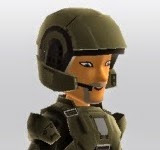I was talking with Erik in the Op Center on Friday and we were discussing the response to the disaster in New Orleans. I opined that things could have been handled better but he didn't see how. He didn't understand what I meant.
Sure, we can't know before hand
where the nasty devil storm is going to hit. And even days before we couldn't predict it's ferocity when it came ashore or where
exactly that would be.
http://www.washingtonpost.com/But a plan could still have been put together. I know because I wrote all kinds of plans for the Army. OpPlans, Contingency Plans ... well there may be other names but these are the main two types. One to lay out how things are going to happen for X operation and one to lay out how things
should go down
if Y happens and Z operation needs to start. Let me give you an example. (this is the five paragraph field order format which ends up being how most [good] military officers think)
1. Situation: A big natural disaster hits on or near New Orleans. The levees may break, there may be lots of collateral damage as buildings are blown down or flooded. Power will likely go out along with other services (sewage, fresh water, police, ambulance, medical) stopping.
2. Mission: Save as many people as possible. Make them as comfortable as conditions permit. Feed, house, clothe them and ensure they have adequate medical services.
3. Execution: Concept of the Operation: Lots of people will need to be moved from a dangerous place to a safe one. This will take vehicles capable of covering the terrain and carrying people. There will need to be a place to take them too. Fuel, oil, relief drivers, maintenance, etc will all be needed for the vehicles. Once the people are there they need a place to sleep, shower, go to the bathroom, food to eat, water to drink, etc.
Specific Assignments: Who will do what, who will be responsible for what. Find the organizations or people who can do it and put them in charge of it. Find someone who is good at organizing and put them in overall charge.
Coordinating Instructions: Who, what, where, when, why.
4. Service and Support: This is the meaty details about where supplies come from, go to and who gets them there. Who gets them from there out to the folks who need them, be they evacuees or rescue types doing the getting.
5. Command and Signal: Talking about things, giving orders, responsibility, authority, all of these "being in charge" type of things.
You can put, even without knowing the details of where or when, a lot of stuff into this sort of
Contingency Plan. Most military officers know this and have done it hundreds (if not thousands) of times for smaller operations. Bigger plans take a few more people a bit more time and are even more short on details but can still be drafted. The key is to have a framework that you can hang the details on when you get them.
And I've done this thing in about 20 minutes. Six months ago they (civil defense types in Louisana) had an exercise which it turns out had nearly identical conditions as this. Why wasn't the plan done then? I won't point my finger at the president like Mr. Robinson of the Washington Post does but I can't help but ask that question. Which leads to 'how many people didn't need to die if you had a plan ready?'.
The answer can only be saddening.




